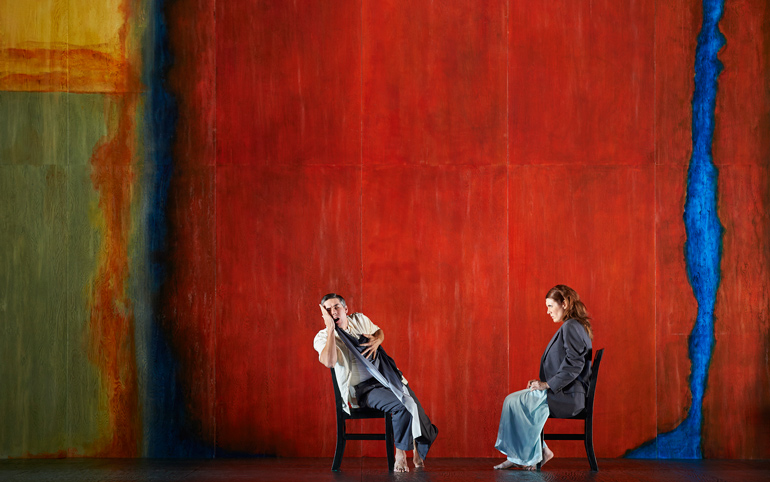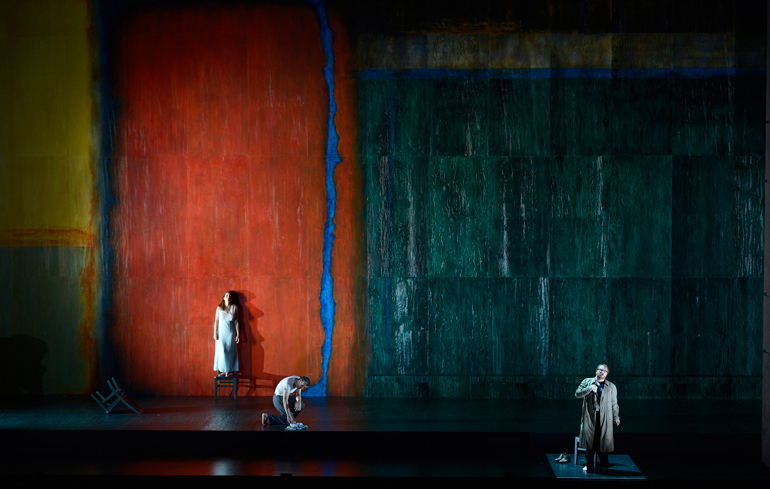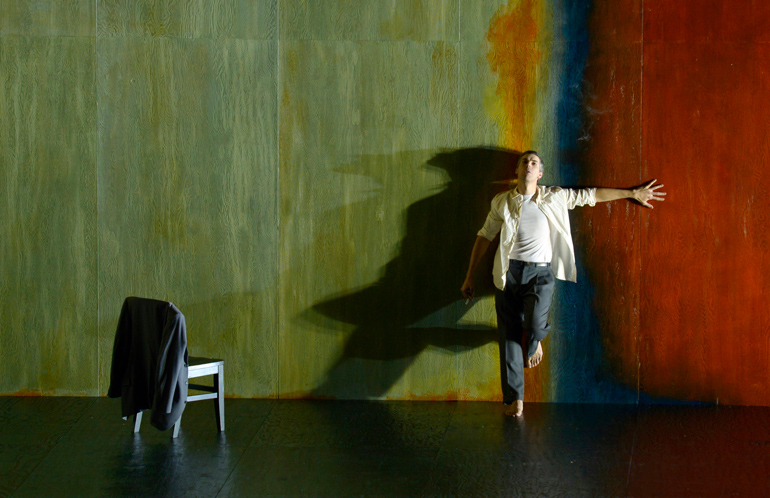
Pyramus and Thisbe: Barbara Monk Feldman. Conducted by Johannes Debus. Directed by Christopher Alden. Until Nov. 7 at the Four Seasons Centre, 145 Queen St. W. coc.ca or 416-363-8231
There has been some concern for the COC’s production of “Pyramus and Thisbe” – not the cast or production per se, but the music itself, which is decidedly unusual for an opera. I received a private note from a reader who insisted I go and see it. She was worried that the critical praise was unjustified; misplaced even.
With an open mind and heart, I went see it. As a critic, I want to be challenged and moved. I was. As a human being, I want to be left with more questions than answers. This too. But like my young son forcing down a mouthful of broccoli, I saw a few people trundle out with sour faces. “This wasn’t an opera” I overheard, “this was watching paint dry.”
Opera is a ubiquitous art form that poses problems for today’s composers looking for new models. As companies like Toronto’s Against the Grain Theatre might attest, “trans adaptation” works because it builds on a familiar frame. But for the mainstream COC audience still getting used to the idea of Baroque opera, let alone contemporary opera, there is a leap. People are decidedly uneasy with uneasiness. “It’s new, okay great, but is it any good?” “Where are the arias, choruses, and swelling gestures?” “A Mark Rothkoesque painting as a backdrop?” Mind you, critics loved it (Robert Harris; Richard Ouzounian) – and so did I.

Perhaps some of the mixed blessings and scepticism comes from Toronto-based Barbara Monk Feldman, a relatively obscure voice and somewhat curious choice for the COC’s first premiere since Randolph Peters’ “The Golden Ass” in 1999.
While I don’t think people care if a composer is female or male these days, ( “because this is 2015,” to quote Trudeau) I think the concern was Feldman’s stylistic use of minimalism and abstract expressionism. While these styles have been tried and tested in chamber and orchestral music for over 50 years, outside of a few exceptions including George Benjamin, Philip Glass Nico Muhly, and John Adams, its use in opera has been fairly limited. On the surface, opulent operatic conventions can seem at odds with minimalism. One wonders if this was the reason it was balanced against Claudio Monteverdi’s aria “Lamento d’Arianna,” (a fragment from his lost opera L’Arianna), Monteverdi’s scena “Il combattimento di Tancredi e Clorinda.”
Opera is a dynamic and complex art form. So much of its dramatic impact relies on timing; the act of stretching drama over soft peaks and valleys rather that mountainous climaxes risk losing what some opera lovers value most. I would caution that this is a matter of preference, and certainly not a basis to determine an opera’s creative success.
Like theatre – which opera shares a kinship – varied approaches result in a healthy art well explored. One would hardly imagine the theatre canon without Becket’s contentious “Waiting for Godot” – a modernist masterpiece, which includes minimalist stage directions that serve the twofold purpose of both unlocking and enhancing the play’s gloomy mystery. Like Godot, Feldman abstracts the scene until it scarcely exists: lieu vague.
The story line of Pyramus and Thisbe uses the classic Greek myth, and includes text by Faulkner and Rilke to expose the inward nakedness of two ill-fated lovers from Ovid’s “Metamorphoses”. Wrapped with two works by Monteverdi, it offers a nod to the timelessness of human mythology. On paper, one might roll eyes at such a “po-mo” move but under the talent of Krisztina Szabo, Phillip Addis and Owen McCausland it hypnoses the senses.

The score is well crafted and adheres to a quest for the essence of the sound as all-consuming, and nothing short of a spiritual pursuit. The spare motives from which the music is constructed serves to highlight fragility. Beyond the reduction of gestures, Pyramus and Thisbe pursues the idea of sonic asceticism where the variations are limited until the music reaches a terminal state of virtually unbroken monochromatic quietude.
Pyramus and Thisbe is an aesthetic reminiscent of the circle of musicians who gathered around John Cage towards the latter part of the 1940s – Earle Brown, Morton Feldman, David Tudor and Christian Wolff. These composers expressed a strong interest in the visual arts, especially the work of Jackson Pollock, Willem de Kooning, Mark Rothko; the latter of which inspired the mise-en-scene of “Pyramus and Thisbe”.
While it’s no secret Barbara Monk Feldman’s style is indebted to her late husband Morton Feldman, she has created a personal voice built upon a quest for musical immobility. What brings Barbara Monk Feldman’s music into the minimalist realm is its wide-angle purview. Hers is music that is more than the sum of it’s parts – a commitment to a process that reveals itself to the patient unfolding of sound. Like a rich Arabic tapestry, the texture becomes the focal point, and blurry vision sees best.
While I applaud the COC having the cojones to present an opera like Pyramus and Thisbe, it is a real test for them. Down deep I suspect the COC has an envy for the fresh face and youthful verve that comes from a new opera. New opera is dangerous and sexy. And in that danger is a chance to find new ways to tell our story.
Joan Didion said it best:
We tell ourselves stories in order to live…We look for the sermon in the suicide, for the social or moral lesson in the murder of five. We interpret what we see, select the most workable of the multiple choices. We live entirely, especially if we are writers, by the imposition of a narrative line upon disparate images, by the “ideas” with which we have learned to freeze the shifting phantasmagoria which is our actual experience.
The COC’s next mainstage commission is Hadrian, composed by Rufus Wainwright with libretto by Daniel MacIvor, scheduled for the 2018/2019 season. After that is La Reine-garçon by Serbian–Canadian composer Ana Sokolović slated for COC’s 2019/2020 season.
#LUDWIGVAN
Want more updates on Toronto-centric classical music news and review before anyone else finds out? Get our exclusive newsletter here and follow us on Facebook or Twitter for all the latest.
- THE SCOOP | Royal Conservatory’s Dr. Peter Simon Awarded The Order Of Ontario - January 2, 2024
- THE SCOOP | Order of Canada Appointees Announced, Including Big Names From The Arts - December 29, 2023
- Ludwig Van Is Being Acquired By ZoomerMedia - June 12, 2023



